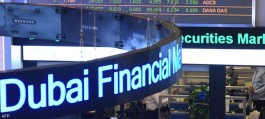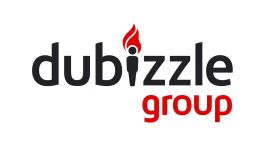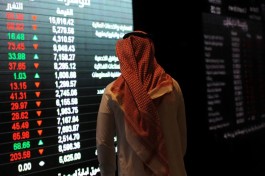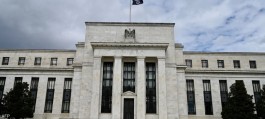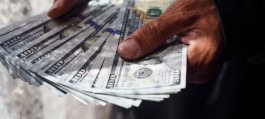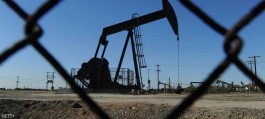U.S. stock indexes posted their strongest gains since February as slowing U.S. job growth sent bond yields lower and traders increased bets on more Federal Reserve interest rate cuts this year.
Investors worried about the risk of stagflation or even recession welcomed the lower-than-expected jobs report, a sign of a cooling labor market and slowing wages. On the flip side, the latest employment data gave encouragement to investors who see the economy slowing gradually, allowing the data-dependent Federal Reserve to start cutting interest rates as early as September.
Jose Torres of Interactive Brokers said: “The lower than expected payrolls numbers are handing the lead to the bulls. Markets are rallying strongly as incoming data points to a shorter ride on the monetary policy path.”
The S&P 500 rose 1.3%, with the market also buoyed by a surprise surge in Apple shares after earnings. The tech-heavy Nasdaq 100 jumped 2%. Wall Street’s fear gauge, the VIX, fell to its lowest level in more than a month.
The yield on two-year Treasuries, which are most sensitive to the Fed’s impending decisions, fell 7 basis points to 4.8%. Swap traders now expect about 50 basis points of monetary policy easing this year, equivalent to two rate cuts. The dollar had its worst week since March.
Bad news..good news
A string of weaker-than-expected data this week — from jobs to services and manufacturing — has put the bad news-is-good-news mantra back in focus. The U.S. version of Citigroup’s Economic Surprises Index — which measures the difference between actual data and analysts’ expectations — hit its lowest level since February 2023.
Nonfarm payrolls rose by 175,000 last month, the smallest increase in six months. The unemployment rate rose to 3.9% and wage gains slowed.
“The weaker-than-expected jobs report suggests there is a lack of activity in the economy that would keep inflation persistently high, increasing the likelihood of a rate cut this year,” said Sonu Varghese of Carson Group.
Federal Reserve Officials' Statements
Chicago Federal Reserve President Austan Goolsbee told Bloomberg TV that additional jobs reports like Friday's would give him the impression that the economy is not overheating.
Speaking separately, Governor Michelle Bowman said inflation was likely to remain elevated for some time, but added that she still expected price gains to eventually moderate as interest rates were kept at current levels.
Following the Federal Reserve's decision on Wednesday, Chairman Jerome Powell indicated that the next step is unlikely to be a rate hike.
interest rate cut
Weaker than expected across the board, the April jobs report vindicates Powell’s decision not to take a hawkish stance at the May meeting and is good news for the Fed and the market, says Krishna Guha of Evercore.
“We feel somewhat more confident in our base case that the Fed will start cutting rates by September,” Guha added.
For her part, Seema Shah of Principal Asset Management believes that the latest jobs report is already bringing the interest rate cut debate back into the market and may explain why Powell was able to lean more dovish in his comments on Wednesday.
Shah noted that this is the jobs report the Fed has been hoping for. Of course, today’s weaker numbers should signal the start of a new, slower path to serious rate cuts back on the agenda, but by then the new fear may be a slowing economy.
Separate data on Friday showed the US services sector unexpectedly contracted in April for the first time since 2022, as a business activity index fell to a four-year low and an input cost index rose.
Moderate numbers
“Today’s jobs report is the definition of a moderate number: a gradual return to normal job growth amid moderating wage growth,” said Gennady Goldberg of TD Securities. “This is certainly the kind of jobs report that Fed officials will welcome. We remain optimistic that the central bank will cut rates at the September FOMC meeting.”
Overall, market watchers say signs of a slowing economy could prompt the Fed to cut interest rates over time, but inflation data will be important.
“The April jobs report has allayed concerns that the US economy is growing too strongly,” said Mark Hamrick of Bankrate. “The data will need to be consistent with the Fed gaining confidence that inflation is approaching its 2% target before it cuts rates. It will remain on high alert for unacceptably high inflation.”
Stagflation fears
U.S. stock indexes’ rally faltered last month as the Federal Reserve signaled it would keep interest rates higher for longer amid rising inflation. A sharp slowdown in economic growth in the first quarter also sparked talk of stagflation, though many market watchers have downplayed that possibility at this point.
Alexandra Wilson Elizondo of Goldman Sachs Asset Management says markets should view the latest jobs report as a welcome breath of fresh air as it will silence the market's hawkish tone and any recent fears of stagflation.
While Fed officials are likely to be relieved that the labor market is slowing, the report is not weak enough to change the Fed's outlook, said Tiffany Wilding of Pacific Investment Management.
She noted that hiring was strong, unemployment remains low, and wages are likely to rise again next month.
Wilding is betting that the Fed will attempt at least one rate cut this year, but she still expects the central bank to remove one or two cuts from its rate path forecast when it releases a new summary of economic projections in June. In March, Fed officials maintained their forecast for three rate cuts in 2024.
“If inflation doesn’t pick up and jobs data remains moderate, a first rate cut in September may be more likely, but we expect the Fed to remain highly data-driven, meeting by meeting,” said Larry Tintarelli of Blue Chip Daily Trend Report.
For his part, Chris Zaccarelli, of the Independent Advisor Alliance, says that as long as the Federal Reserve keeps interest rates where they are - or cuts them once or twice - the market can continue to move higher.
Performance highlights:
- The S&P 500 was up 1.3% as of 4 p.m. ET in New York.
- Nasdaq 100 up 2%
- The Dow Jones Industrial Average rose 1.2%.
- Bitcoin price rose 5.7% to $62,103.17
- Ether value rose 2.9% to $3,074.41
- Spot gold fell 0.1% to $2,301.47 an ounce
- The Bloomberg Dollar Spot Index fell 0.3%.

